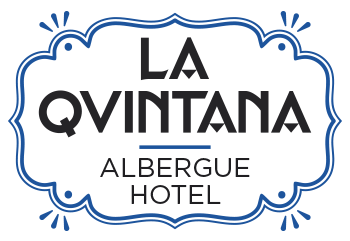First stage of the primitive path (Oviedo-Grado)

This first stage already gives us a serious warning that the Primitive Way will not be any walk. Except for the departure from Oviedo, the journey takes place for the most part along paths and paths in a pleasant rural environment, with frequent slopes, crossing forests, meadows and small villages. In 2018 our hostel for pilgrims in Grado was inaugurated; a joy for those who no longer have left bellows for the strong rise, previously forced, to San Juan de Villapañada.
Distance: 25,2 kms
Duration: 6 h. 15 mins.
Small town of Grado. Crossroads of roads
Grade, territory of crossroads by geography and history, comes to the passage of the pilgrims who travel the “Camino de Santiago”. Consolidated as a regional center of services this village of about 7,000 inhabitants welcomes the traveler with the warmth of its people, making him a participant in its culture rooted in popular traditions. You can walk through its quiet streets while admiring such unique buildings as:
• The Miranda-Valdecarzana Palace:
Built in the 15th century and renovated in the 18th century, it is currently the headquarters of the Ethnographic Museum. Presents a cubic-shaped plant, with two heights and four corner towers. The main cover is adorned with a coat of arms. Inside, a central patio with a central fountain awaits us.
• The Chapell of Sorrows:
From the sixteenth century. In another time it was the garden of the Palace of Valdecarzana. It was built in the eighteenth century, the highlight of it is the cover of the East side. At present we can not contemplate its magnificent altarpiece, since it was destroyed by the Napoleonic troops, who turned the sacred enclosure into a block for their horses.
• Parish Church of San Pedro:
This beautiful parish church stands out for its façade, flanked by two quadrangular towers, topped by pyramidal roofs, and the ascending axis of its façade thanks to the superposition of the bays arranged in its two bodies. The church was burned down in the Civil War, exactly on September 15, 1936, causing great internal damage and the collapse of one of its towers.
• Santuary of our Lady of Fresno:
El Fresno has, in addition to the large stone cross in front of the cemetery, Jacobean lighthouse of illegible inscription and memory of the place occupied by the first church built in the ninth century, the sanctuary dedicated from the 17th to Our Lady, an elongated Latin cross. short lateral arms and spaces covered by vaults, with square tower of low height at the feet three large semicircular arches open the first section, a bell tower of two holes last, side porch on Tuscan columns and sacristy that should have functions of hermitage having a slight bulrush. To the interest of its peculiar external forms the interest of altarpieces and images is united. Retablos and images such as the Crucified Christ, with deep-rooted popular devotion, the altarpiece of San Antonio (seventeenth century), a classic line and a well-carved saint and the Baroque – angels and Crucified – main altarpiece.
• Indian Architecture of the 19th and 20th centuries
It is worth taking a walk around the town, as its streets are full of buildings with a marked Indian character.
• Ethnographic Museum:
This center, founded in 1892, gathers all the traditional culture of the region. Since 1995, it is located in an industrial building in La Cardosa. The permanent exhibition is distributed over two floors, spread over 595 square meters. At present, it has rooms on the ground floor of the Casa de la Cultura of the Palacio Miranda Valdecarzana locality; they are dedicated to temporary exhibitions and to the room that shows the so-called “cider culture”.
Grado, small town and market
For centuries, every Sunday the squares and the main streets of the Villa are filled with vendors, people and merchandise: afitu’l Pitu cheeses, spelled bread, handicrafts, tools, clothing and footwear, products from the Moscon orchard …

